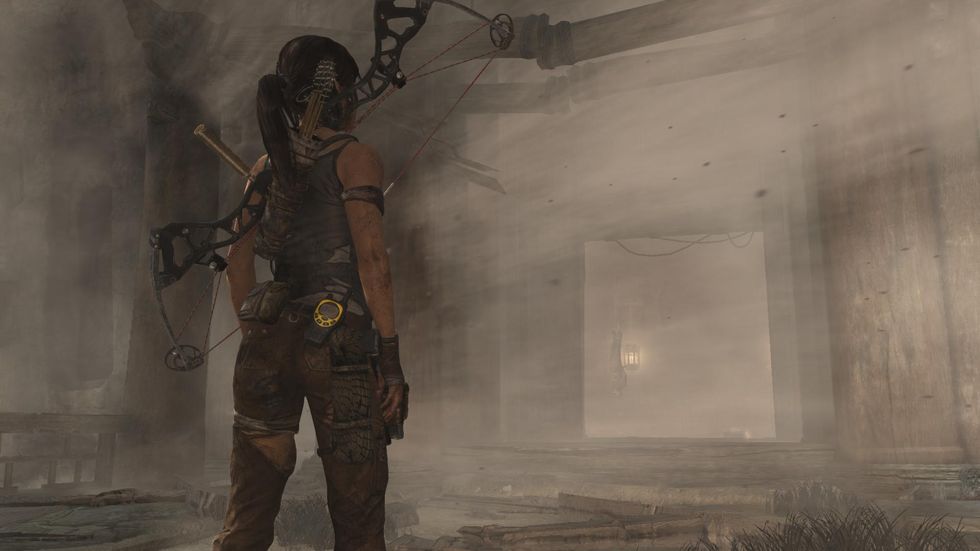When I saw "Tomb Raider," the fact that it is based on the 2013 video game of the same name did not sink in until the logo for the video game developer and publisher "Square Enix" appeared in the opening credits. I was immediately filled with apprehension, as I have been with other films whose source material is dependent on user interaction.
Movies based on video games have a strong losing streak, ranging from painfully bad to entertainingly bad to boringly adequate to somewhat entertaining, no matter the quality of the source material. The issue has always seemed obvious to me, and it's the same problem that many book-to-film adaptations have: a video game is meant to be experienced over a longer period of time.
This combined with the fact that a single player is meant to put themselves in the shoes of the protagonist means that a movie has to a do a lot of tweaking in order to make a video game story unfold naturally on the screen.
Thankfully, and perhaps surprisingly, "Tomb Raider" achieves a comfortable medium, feeling like a classic action/adventure while paying enough homage to its origins. It even recreates some of the game's more cinematic moments shot-for-shot and draws thematically from the sequel game released in 2015. Yet the film also succeeds in making Lara her own person, rather than a vessel for a player to experience the story through.
The new origin for Lara Croft (Alicia Vikander) introduces her as the charismatic, athletic heir to the Croft family business and fortune. However, she is reluctant to inherit the family wealth because it would mean accepting that her father Richard Croft (Dominic West), who has been missing for seven years, must indeed be dead. She would rather remain in a state of passivity, struggling to make a living on her own. This introduction takes steps to make her a more sympathetic and likable character to general audiences, rather than present her as a rich, careless adventurer.
Lara follows clues left behind by her father, revealing that he had been racing a mysterious organization to the last resting place of the Japanese queen Himiko, whom he believed could rise again and destroy the world. Lara decides to follow his steps and travel to that lost island off the coast of Japan in order to discover what became of him. Cue the treasure hunt.
What follows is a plot that is ultimately exactly what you'd expect, but not without its own personal touches that sell each moment and keep it from feeling clichéd. The mysterious organization, Trinity, has already been on the island these past seven years.
The big bad guy in charge, Mathias Vogel (Walton Goggins), has been unsuccessful in finding for Himiko's tomb. Luckily, he can now use Lara's natural knowledge of puzzles and clues to aid his search. A villain using lots of explosives to search for a hidden treasure forcing the hero to accelerate the process by solving the hidden puzzles with their wit, ultimately leading to a crypt/temple rife with traps and riddles; it seems to be a thematic setup passed down from "Indiana Jones" to "Tomb Raider" to the "Uncharted" series and now back to "Tomb Raider."
Yet, due to the individual performances, well-paced action, and some capable directing, it all feels original, or at least satisfying. A single shot that included a framed picture of the villain's daughters is one example, and Lara's arc is another.
The film constructs her as athletically capable, but not invincible. Naturally, she still manages to survive unrealistic circumstances, but not without a bunch of grunts and injuries along the way. There really are a lot of grunts; Vikander puts more vocalization into her work than Serena Williams. She is pushed to her physical limit, and her performance sells the idea that these trials and tasks are truly deadly and taxing. All of this makes her feel far more human.
This is a Lara Croft that hardly ever sticks the landing. In fact, the entire first third of the movie shows her failing constantly, be it in a friendly martial arts contest, a bike race through the city, or bumbling her way through the jungle, barely surviving each threat. The stressful situations that she is forced into have a weight to them. A particular scene where Lara is forced to kill an assailant for the first time has a dark callback to that friendly martial arts match at the start of the film, as her attacker seems to "tap out" toward the end of the fight.
As I have played the 2013 video game "Tomb Raider," I can't help but compare the two narratively and thematically. But the fact is, the movie stands up on its own without comparison. Lara's emotional arc is a highlight of the film and surpasses that of the video game. It is more "inspired by" than directly pulled from.
A large portion of the supporting cast is left behind or bare in order for us to spend more time with Lara. And she is a Lara worth getting to know. In the previous attempt at the Tomb Raider cinematic franchise, Angelina Jolie was somewhat altered in her appearance to look more like the Lara Croft from the original games.
That look was purposefully left behind in the 2013 game, and the new film cast their Lara appropriately. Lara Croft is an iconic character, and it's my understanding that people want to like her. Much like the 2013 video game of the same name, the new Lara Croft should be given a chance to improve the concept with a sequel.





 StableDiffusion
StableDiffusion StableDiffusion
StableDiffusion StableDiffusion
StableDiffusion Photo by
Photo by  Photo by
Photo by  Photo by
Photo by 
 Photo by
Photo by  Photo by
Photo by  Photo by
Photo by  Photo by
Photo by  Photo by
Photo by 










